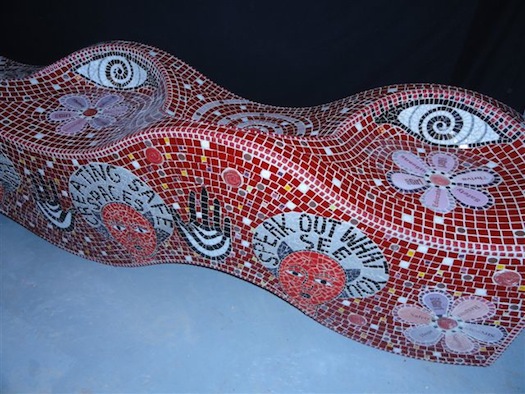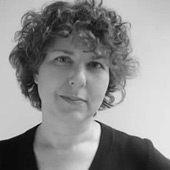
Photo courtesy Rock Girl.
There’s nothing undemocratic about sexual violence in South Africa, where rape is a crime that crosses class, race, and gender. “It is estimated that a woman born in South Africa has a greater chance of being raped than learning how to read,” states Rape Survivor Journey, a website that provides victim resources and statistics.
Spatial boundaries are crossed as well. Attacks occur in homes, schools and streets. India Baird, a lawyer based in Cape Town who focuses on social justice issues, is drawing attention to the diminished number of environments in which South African girls and women can feel safe. Rock Girl is her campaign to plant benches in Cape Town that offer real and symbolic respite from anxiety.
The idea came to Baird while she was working with young girls at a school in Manenberg, a township on the outskirts of Cape Town. One day, a group of late-teenage boys began hurling rocks at the children. They “weren’t worried that a teacher and two other women were there,” Baird recounted. This assault led the girls to discuss their fears of vulnerable places. The school couldn’t keep out the men who crawled through its fences or loitered in its latrines. For security, they went to a nearby shop run by a woman who looked out for them.
Like Jane Jacobs a half-century ago, Baird sought to exploit the concept of eyes on the street. She imagined benches placed in front of shops and other conspicuous locations that would provide safe harbors for girls and women while making the problem of assault more visible. She and Rock Girl’s co-founder, the photographer Karina Turok, named the organization after an African National Congress Women’s League slogan from the apartheid years: “If you strike a woman, you strike a rock.”
On Wednesday, Rock Girl installed its first bench at the Cape Town International Convention Center, timed with the opening of the Design Indaba conference. Designed by the local mosaic artist Lovell Friedman and sponsored by Design Indaba, the bench has a sinuous shape that allows seating on either side. “We loved the idea of sitting looking out for each other,” Baird said. Friedman worked with township women on the motifs: hands signifying both healing and caution; eyes watching out and representing community. The women proposed the words and slogans integrated into the design: “creating safe spaces,” “speak out what you see.” A toll-free number displayed on the bench encourages Capetonians to hear more about their countrywomen's experiences.
According to Ravi Naidoo, Design Indaba’s founder, the bench will be moved to the Fan Walk, a vibrant pedestrian thoroughfare that leads to Cape Town’s new stadium. A partner bench will be installed in the Khayelitsha township under a real tree, in accordance with the wishes of girls who worked with Friedman in the local community center.
With the assistance of city officials, Baird is seeking sponsorship for additional pairs of benches to be distributed. This effort will be vastly aided if Cape Town wins its bid to be World Design Capital in 2014. “The proposal is going out this week,” Baird said. “They’re putting this in the book.”


Comments [1]
02.26.11
06:21